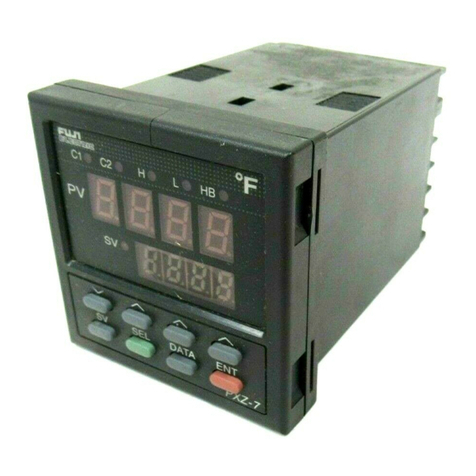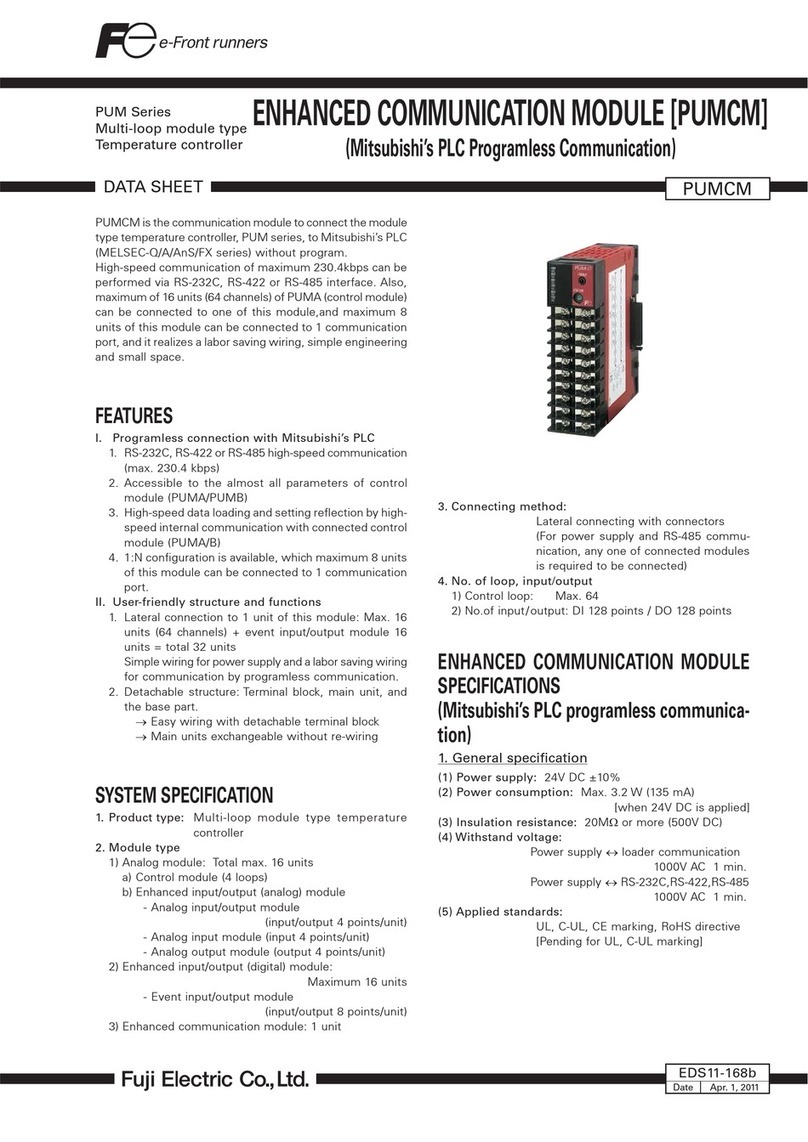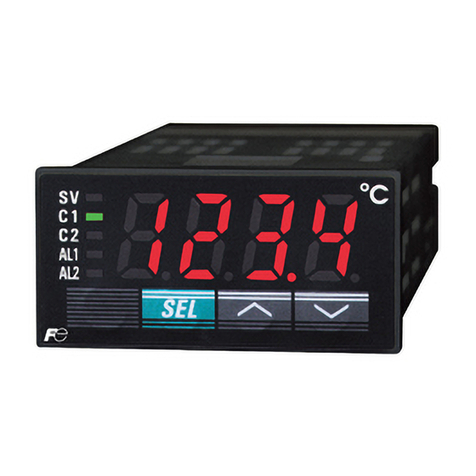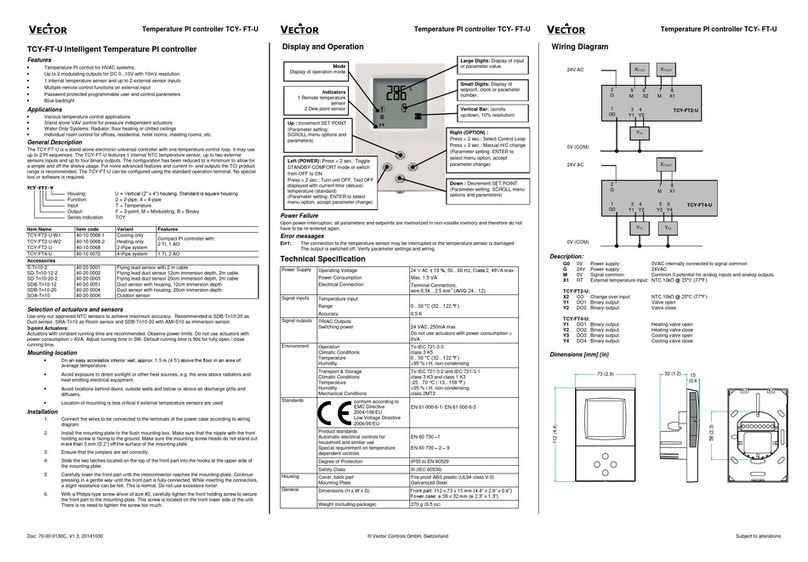
7
3-2 2nd block parameter ............................................................................................................................ 30
[P] Proportional band (030) ..................................................................................................................... 30
[i] Integral time (031) ............................................................................................................................. 30
[d] Derivative time (032) ........................................................................................................................ 30
[HyS] Hysteresis range for ON/OFF control (033) ..................................................................................... 32
[bAL] Output convergence value (036) .................................................................................................... 34
[AR] Anti-reset windup (037) ..................................................................................................................35
[CtRL] Control algorithm (038) ............................................................................................................... 36
[SLFb] PV (Process variable) stable range (039) ....................................................................................... 39
[oNoF] Hysteresis mode (040) ................................................................................................................. 40
[tC] Cycle time of control output 1 (041) .................................................................................................. 41
[P-N2] Input signal code (043) ................................................................................................................ 42
[P-SL] Lower limit of measuring range (044) ............................................................................................ 43
[P-SU] Upper limit of measuring range (045) ............................................................................................ 43
[P-dP] Decimal point position (046) .........................................................................................................45
[PVOF] PV offset (048) .......................................................................................................................... 46
[SVOF] SV shift (050) ............................................................................................................................ 47
[P-dF] Time constant of input lter (050).................................................................................................. 48
[ALM1] [ALM2] Alarm type 1, 2 (051, 052) ............................................................................................ 49
[StAt] Status display of ramp soak (054) .................................................................................................. 51
[PtN] Ramp soak execution pattern (055) ................................................................................................. 52
[SV-1] to [SV-8] 1st target SV to 8th target SV (056 to 077) ....................................................................... 53
[tM1R] to [tM8R] 1st ramp time to 8th ramp time (057 to 078) .................................................................. 53
[tM1S] to [tM8S] 1st soak time to 8th soak time (058 to 079) .....................................................................53
[Mod] Ramp soak mode (080) ................................................................................................................. 55
3-3 3rd block parameter ............................................................................................................................. 57
[P-N1] Control action (090) .................................................................................................................... 57
[SV-L] SV (Set value) lower limiter (091) ................................................................................................ 58
[SV-H] SV (Set value) upper limiter (092) ................................................................................................ 58
[dLY1] [dLY2] Delay time 1, 2 (093, 094) ................................................................................................ 59
[A1Hy] [A2Hy] Alarm 1, 2 hysteresis (098, 099) ...................................................................................... 59
[A1oP] [A2oP] Alarm 1, 2 options (101, 102) ........................................................................................... 61
[PLC1] [PHC1] OUT1 Upper/Lower Limits (104, 105) ............................................................................. 62
[PCUt] Output limit types (108)............................................................................................................... 63
[oUt1] Output value (MV) display (109) .................................................................................................. 64
[RCJ] RCJ (Cold junction compensation) setting (111) .............................................................................. 65
[AdJ0] User-denable zero adjustment (113) ............................................................................................ 66
[AdJS] User-denable span adjustment (114) ............................................................................................ 66
[dSP1] to [dP14] Parameter mask (126 to 139) .......................................................................................... 68
[UKy1] [UKy2] [UKy3] USER key assignment (143, 144, 145) ................................................................. 70
[FLo1] MV1 during FALT (146) ..............................................................................................................71
[dSPt] PV/SV display OFF (148) ............................................................................................................. 72
4 Troubleshooting ............................................................................................................... 73





































